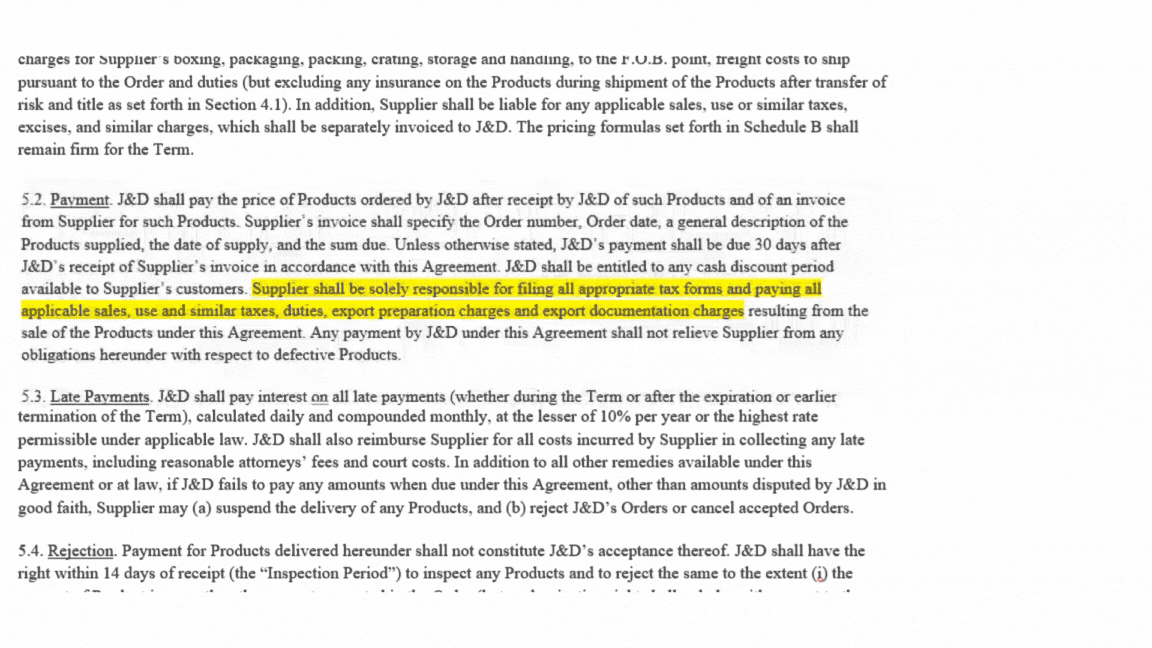Works Where Lawyers Work: ContractKen lives inside Word as an easy-to-use add-in, meaning you can review, redline, and draft contracts in the same Word document you’ve always used – now just augmented with AI. There’s no new interface to learn; if you know how to turn on Track Changes and insert comments in Word, you can use ContractKen’s AI suggestions.
This seamless experience aligns with ContractKen’s philosophy of amplifying lawyers’ expertise while simplifying the use of AI in contractsYou get all the benefits of advanced AI without changing your workflow.
ContractKen use AI to redline edits for risky terms or deviations from the playbook, highlighting changes that attorneys can then accept or reject. As the AI proposes changes, they appear as tracked edits in Word or as comments – nothing is automatically "finalized" without your say-so. The lawyer remains the final arbiter on every change. In practice, this means the AI might generate a revised indemnification clause per your playbook’s preferences; you can then review that suggestion, perhaps see a comment explaining it, and choose to accept or tweak it.
This collaborative stance ensures transparency: you see exactly what the AI is doing and why. It’s like having a junior attorney that works at superhuman speed but still leaves the decision-making to you, the supervising attorney.
ContractKen allows users can quickly encode their own checklist or standards into the AI, without needing an IT expert. The ability to bring your own playbook: e.g., upload or define your company’s negotiation rules, and the AI will apply them consistently when reviewing a contract. With ContractKen, your organization’s contract playbook comes to life.
Did the counterparty sneak in an unusual liability clause that violates your playbook? ContractKen will spot it and either suggest deleting it or replacing it with your pre-approved wording. For teams that don’t have extensive playbooks yet, ContractKen offers well-researched industry-standard playbooks out-of-the-box (drawn from best practices) to ensure even smaller legal teams can enforce consistency from Day 1. This playbook-driven review guarantees that every contract your team touches is evaluated against the same quality benchmark – no more missed issues or inconsistent positions.
Beyond redlining text, ContractKen inserts explanatory comments or annotations. This is akin to having an expert editor reviewing your contract and leaving notes. By embedding the “why” behind a change (e.g., “This indemnity clause is non-standard; consider adding X for better protection”), the AI helps lawyers and their teams make informed decisions.
It also facilitates active collaboration – team members can reply to these comments, discuss them, or use them as a basis for internal approval, all within the document. The ability to instantly see an alternative wording for a clause (or a flagged problematic term with a recommendation to fix it) can cut drafting and review time dramatically.
Because ContractKen operates in Word, it naturally supports the collaboration features lawyers rely on. Multiple team members can review a ContractKen-assisted markup, add their own comments, or adjust the AI’s suggestions. All changes are tracked just as if a human made them, facilitating internal discussions (for law firms, that could be partner review of an associate’s draft; for in-house, it could be legal reviewing procurement’s redlines).

Tired of hunting through old documents for that perfect clause you wrote last year? ContractKen comes with an integrated Clause Library of 700+ curated clauses covering common commercial contracting scenarios
Need a non-solicitation clause that aligns with your playbook? Simply search the library from within Word and drop it into your draft. The AI can also suggest clauses from this library as you work. For example, if your playbook says every SaaS agreement should include a data privacy clause, and your draft is missing one, ContractKen might recommend inserting a clause from the library and tailor it to the context. By blending AI with a rich knowledge base, ContractKen helps you draft contracts up to 2x faster without sacrificing quality.
A newer innovation is the use of contract analytics and benchmarking in the playbook workflow. Data can tell you how a clause in your draft compares to what’s typical in the industry.This insight is incredibly valuable during negotiations – it provides leverage by showing if a position is one-sided or unusual.
Additionally, analytics dashboards can track common deviations, clause fallback patterns, and negotiation trends across deals. This data helps legal teams continuously improve their playbooks and demonstrate the value of the AI tool (for example, showing that 80% of incoming vendor contracts had an unacceptable termination clause which the AI flagged each time).
Related blogs & articles:


